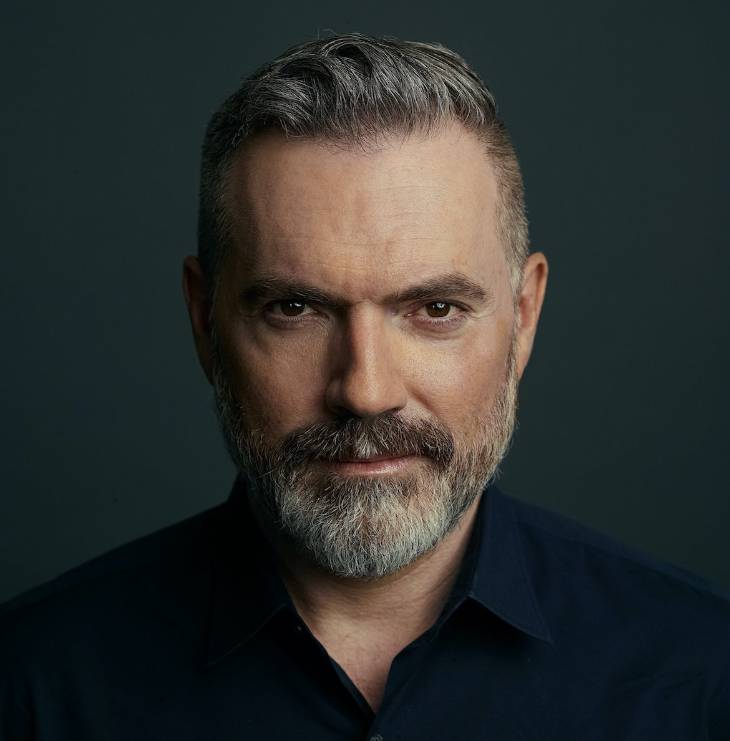
Q&A with Twitch head of games Bill Young
Tuesday, March 23, 2021
Oklahoma State University alumnus Bill Young is the head of games at Twitch. Young, who attended OSU from 1988-1994, has been in the gaming industry for almost two decades. STATE magazine caught up with the esports industry titan to talk about the the growth of the video games industry, his favorite games and the future of gaming at OSU.
1. What was the gaming scene like when you were in school?
Gaming wasn't yet considered mainstream entertainment in the early ’90s. At one end
of the spectrum, we would play 4-person RISK on a single PC for a mellow night in
… at the other end, very loud Mortal Kombat tournaments prior to going out. The most
sophisticated we ever got was an apartment complexwide PGA Tour Golf tournament with
a $5 buy-in. Essentially, these events and communities were limited by existing social
circles, as opposed to being interest-based as it is now. There was nothing truly
organized about it, and even talking about it in mixed company would probably have
been met with disapproving eye rolls. There were "LAN parties" on campus, but those,
too, were relatively closed social events. Gaming was, for the most part, viewed as
a kid's activity. I think those in IT/IS, and computer sciences knew that it was more
than that, but the average student simply didn't have time for that nonsense (...
of course, they did, they just chose to spend it doing other things).
2. Why should universities be looking at esports as an opportunity?
Esports is one important component of a much larger gaming industry. In fact, at $180
billion in 2020, video games are now bigger than movies and North American sports
— combined. There are over 260,000 people employed in the video game industry, a number
growing by almost 5% per year in the U.S. The disciplines needed by the games business
are remarkably varied, ranging from art/design to computer programming … but don't
forget about business, architecture, finance, IT/IS and marketing/PR. Universities
worldwide have already recognized this as a significant growth area and are now competing
for the best and brightest who are dedicated to building careers in the games business.
Oklahoma State University is fortunate in that it already has fantastic programs that
could easily feed into an esports/gaming curriculum.
3. What’s the biggest misconception about esports?
I think it's the word “sports.” It causes traditionalists to shudder at the thought
of calling something that lacks perspiration or dumping coolers of Gatorade over your
coach a “sport.” Rather than go into a diatribe about curling, golf, archery and shooting
(all of which are or have been Olympic sports), I'll focus on two things that are
critical for any sport: speed and an audience. (Former NFL running back) Marshall
Faulk once said that speed is the rate that an athlete processes information and uses
that information to make a decision. His cutting style of running was based on being
able to process the likely movement of defenders hoping to tackle him — and evade
them; he was simply "faster" than his competition and in contrast, the rest of the
field was moving in slow motion.
Esports requires insanely fast information processing, decision-making and execution.
But who cares if no one is watching, right? In early 2020, just before COVID-19 shut
down just about everything, the global esports audience had grown to half a billion
people (likely a relatively distant second to only soccer).
It’s a pretty safe assumption that esports viewership and fandom rose dramatically
(as video gaming has) over the remainder of 2020. I think whether you're talking about
football, soccer, curling, or Fortnite — it's exciting to watch the very best at something
compete for a title. That, at its essence, is why esports is as popular as it is.
However, I do think you're likely to see more traditionally “athletic” esports come
into focus in the not-too-distant future, by incorporating AR/VR, which will also
provide some amazing new viewing opportunities as well.
4. Clearly, you’ve shown that there is major career potential in the world of esports. Beyond the world of competitive players, what other careers does the industry have to offer?
A very small percentage of those making their living in esports are competitors. There are business leaders, marketers, events teams, video and broadcast production companies, analysts, investors, brand partners … an incredibly diverse spectrum of disciplines is needed for something as big as esports to ascend to where it is — and is heading.
5. Favorite games to play vs. favorite games to watch?
I'm a single-player guy … “The Last of Us 2” and “Ghost of Tsushima,” were my favorite games of 2020. I like to immerse myself into a narrative, complete the various challenges and “beat” a game. Those are not the kinds of games that are fun to watch, though. Competitive multiplayer games that are different with each match … that's what audiences love. Games like League of Legends and DOTA2 provide deep strategy and coordination with teams, whereas CS:GO, Overwatch and even Fortnite bring high-paced shooter action. Esports isn't a single game, or even a single genre of games. In fact, esports is diversifying as it grows, and it's doing so with the broader games business — contributing to that is one of the things that makes being in this industry so much fun.
MEDIA CONTACT: Mack Burke | OSU Editorial Coordinator | 405.744.5540 | mack.burke_iv@okstate.edu
